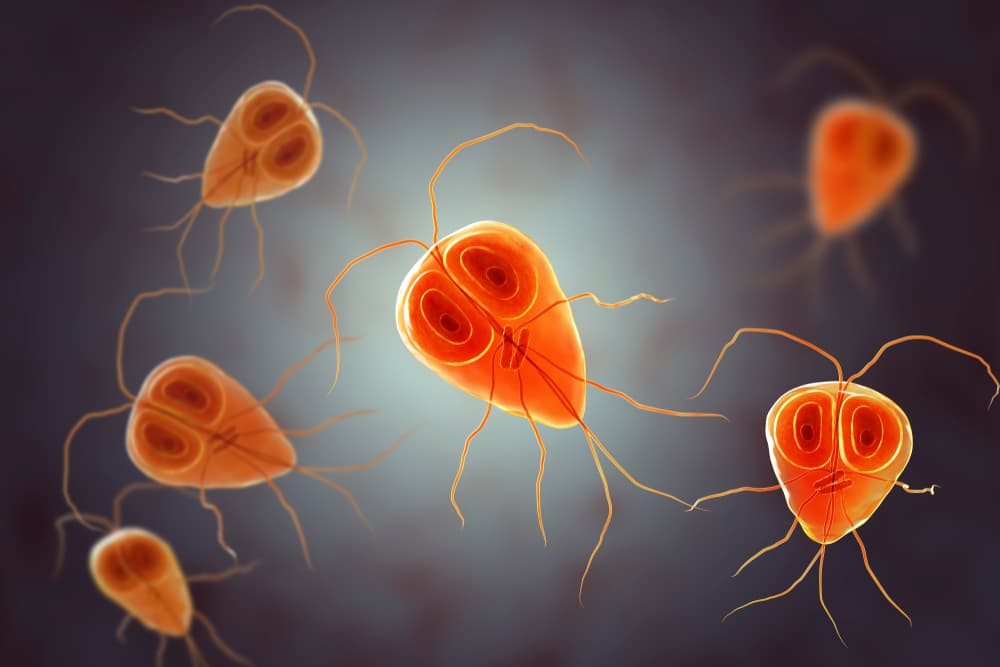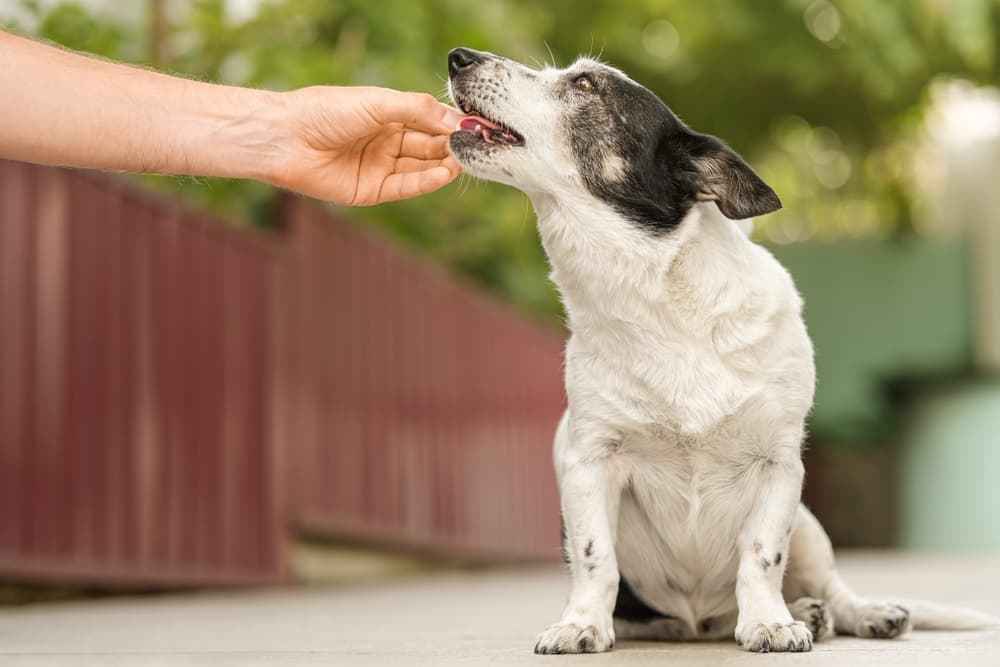Giardia in Dogs

Overview
Giardia is a common intestinal parasite of dogs that causes diarrhea as its primary symptom, though many dogs with this condition don’t experience any symptoms.
Giardia in dogs is generally not severe, though some young dogs may become severely infected and can experience dehydration due to diarrhea. Fortunately, treating Giardia in dogs is relatively inexpensive, although multiple courses of treatment may be needed. Read on to learn more about this parasitic infection in dogs and what you can do if your dog is infected.
What is Giardia?
Giardia is a protozoan parasite, found worldwide, that infects many mammalian species. The parasite is found in soil, water, or food contaminated with infected feces. Infection in dogs is common, particularly in crowded environments such as shelters, breeding facilities, and kennels. Several studies have also found an increased prevalence of Giardia in dogs that visit dog parks. Young animals are more commonly infected than older animals, and infection is typically more severe in younger animals.
Giardia parasites attach to the small intestines and damage the cells lining the small intestine, causing malabsorption and hypersecretion that leads to diarrhea. Within about 5-12 days of infection, the infected dog will begin shedding Giardia cysts in its feces, posing an infection risk to other animals and potentially even re-infecting itself.
How Do Dogs Get Giardia?

Transmission of Giardia occurs via the fecal-oral route, meaning that dogs must ingest contaminated feces to become infected. This can occur directly if dogs eat poop or indirectly by ingesting contaminated food or water. Because it only takes a small number of Giardia cysts to cause an infection, even walking through contaminated soil and then licking the paws can cause a dog to become infected with Giardia. Infective Giardia cysts can live in the environment for months under ideal conditions.
Giardia is not contagious directly between dogs, but exposure to an infected dog’s feces can cause your dog to become infected. Similarly, dogs cannot directly transmit Giardia to humans. However, humans can become infected with Giardia by the same fecal-oral route that affects dogs. Ingesting contaminated water is a common route for exposure to Giardia in humans.
Giardia Symptoms in Dogs
Many dogs with Giardia have no symptoms. However, it’s still important for the Giardia to be diagnosed and treated, because asymptomatic dogs are still shedding infective Giardia cysts into the environment, increasing the risk of infecting other dogs and people.
When dogs have symptoms of Giardia, they may include:
- Diarrhea
- Increased frequency of defecation
- Abdominal discomfort
- Dehydration
- Lethargy
- Poor body condition
- Vomiting (rare)
- Fever (rare)
- Blood in the stool (rare)
What does Giardia poop look like? Poop from a dog with Giardia may be liquid to semi-formed, and is often pale and mucous-like in appearance. The quantity of stool is typically normal.
How to Diagnose Giardia in Dogs
Giardia can be difficult to diagnose because the shedding of cysts occurs intermittently. To identify Giardia in the feces, your veterinarian may recommend some or all of the following tests:
- Fecal flotation with centrifugation. This is the most commonly used test for the diagnosis of Giardia. In this test, a sample of your dog’s feces is mixed with a special solution that makes Giardia cysts float to the surface where they can then be identified under a microscope.
- Fecal enzyme-linked absorbent immunoassay (ELISA). This test identifies Giardia-specific antigens from trophozoites, which are the growing stage in the parasite life cycle. This eliminates the diagnostic problem of intermittent shedding of cysts.
- Fecal direct smear. A small amount of your dog’s feces is mixed with two to three drops of saline and then examined under a microscope to identify Giardia trophozoites.
Because Giardia can be difficult to diagnose, a negative test result does not necessarily rule out Giardia as the cause of your dog’s symptoms. Your veterinarian may recommend repeating the test(s), sometimes as frequently as every other day, over several days to increase the chances of diagnosing Giardia.
Giardia in Dogs: Treatment

The main goal of treatment is to stop the symptoms of Giardia, such as diarrhea. The secondary goal of treatment is to eliminate the infection, which can be difficult due to the resistance of some Giardia strains to treatment.
In addition to medication, good sanitation is essential to remove the source of infection and prevent re-infection. Feces must be picked up and disposed of daily and surfaces should be cleaned and sanitized. Following treatment, a recheck fecal flotation with centrifugation should be performed to assess whether the infection has been successfully cleared.
Medications for Giardia in Dogs
Medications used to treat Giardia in dogs include Metronidazole, Fenbendazole, or a combination of febantel, pyrantel pamoate, and praziquantel (DrontalPlus). The dosage and duration of these treatments will depend on the treatment used, your dog’s weight, and the severity of your dog’s infection.
Be sure to follow your veterinarian’s dosing instructions and give the entire course of medication, even if your dog’s symptoms resolve before the course is finished. In some cases, your veterinarian may recommend giving a second course of medication to ensure that the infection is fully cleared.
Probiotics for Dog Giardia
Probiotics work by populating your dog’s gut with healthy bacteria. Probiotics do not treat Giardia, but they are not harmful and may be helpful in the treatment of diarrhea. Your veterinarian may prescribe a probiotic to help resolve your dog’s diarrhea after treatment for Giardia. Probiotics are generally given in the form of a capsule or powder sprinkled on your dog’s food.
General Cost to Treat Giardia in Dogs
Giardia is generally inexpensive to treat and pet owners should expect to spend $50-$150 dollars treating this condition in most cases, depending on the size of the dog and the severity of the condition.
In some cases, multiple courses of treatment may be needed to clear the infection, and this can incur an additional cost.
How to Prevent Giardia in Dogs
There are a few things that pet parents can do to help prevent their dogs from contracting Giardia.
Practice good hygiene. Clean up feces daily to prevent Giardia from spreading from one animal to another. Dispose of feces immediately. Wear gloves and wash hands after contact with feces.
Avoid contact with contaminated water sources. These include areas where wildlife or other dogs may defecate.
Sanitize areas where infected dogs have been. Giardia cysts can live in the environment for long periods of time. Use disinfectants that are effective against Giardia or steam clean the area to inactivate the cysts.









